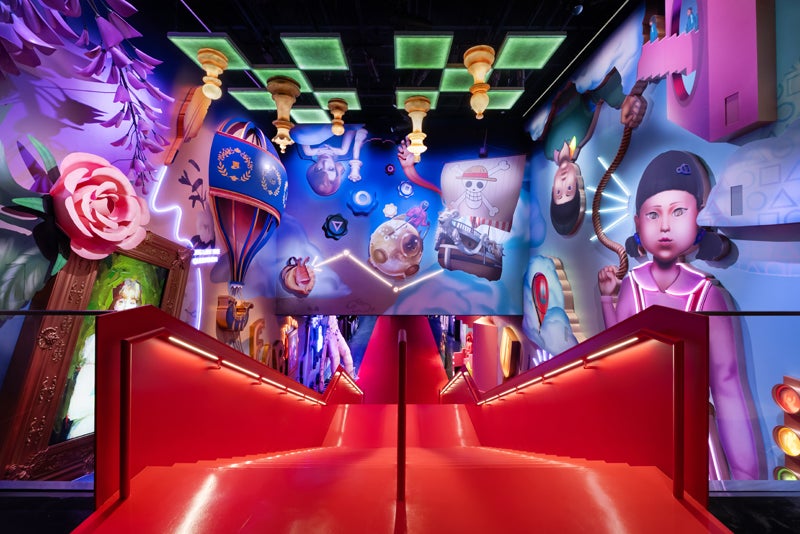Visa set new ground in 2002 when it sponsored the Broadway show Movin’ Out, showcasing the brand on some of the world’s greatest stages. As part of the New York debut, Visa cardholders got six-week advanced access to ticket sales. In other markets Visa became the only credit card accepted for the show’s national tour. As a result, credit card usage nearly doubled from 36% to 67% in total sales, according to New York City-based Serino Coyne, a marketing and advertising agency that handles live entertainment. The company created a national commercial, devised a sweepstakes tie-in with member banks and gave cardholders access to pre-show events to boost its sponsorship.
Despite Visa’s success, Broadway remains a relatively untapped market, something that Nancy Coyne, founder and CEO of Serino Coyne, says is certain to change. She says the target audience — college-educated women 24 to 54 with household incomes of $100,000 and up — is a perfect fit for brands to make a lasting connection. PROMO spoke with her recently about how brands can make their Broadway debut.
What’s the appeal for brands to become involved with Broadway?
[Marketers] have started to take a look at Broadway as traditional media has become a little scarier. When you look at Broadway, you look at a growing audience, not a diminishing audience. This is an untapped area. We have an influential audience. Buzz marketing to us is word of mouth and we have been relying on it since theater began.
What are the advantages for a brand to associate itself with Broadway?
It’s emotional in the minds of their consumers. They see it as bringing them entertainment. It gives them high visibility, great memories and a real rub-off effect.
What are the options for brands that are looking to become involved in a theatrical show?
It’s your name on the marquee to product placement, to your name on the souvenir book and your name on merchandise that is sold for the show. Experiential marketing is what people are talking about these days, and we’ve got the Broadway experience. Rather than invent a show, why don’t you affiliate with a Broadway show that shares your message and your audience?
[Take] Visa’s (2002) sponsorship, in which they made a commercial for Movin’ Out. Visa was the one that made its possible for the musical to go on tour. You can’t buy that. Billy Joel won’t sell his music. But if you sponsor his show, you get his music. It’s the way to get the best of the best attached to your product.
How much must marketers spend to tie into a Broadway show?
This is a brand new, wide-open field. There is plenty of room for negotiation, but conversations can start for as little as $50,000 for a special promotion to several million for an all-out sponsorship.
What kind of return on investment can a brand expect from a sponsorship?
It hasn’t been measured. When Visa sponsored Movin’ Out, they had credit card transactions, and were very happy with the transactions. They knew it was good image.
Why do you see Broadway as a growing area for marketers?
It’s live. Other than concerts, nothing else is live. It’s an uncluttered area. You are not going to be fighting with another sponsor in the same pod for attention. You can own a show. It’s multi-generational. It doesn’t just appeal to one restricted group of people. It’s handcrafted. It’s once in a lifetime.
What are the challenges in pitching a Broadway relationship to a brand?
The first is to make the brand aware that Broadway isn’t a local New York phenomenon, Broadway is a national opportunity. Broadway shows attract 64% of their audience from across the country. And no art form has greater value than live. There is something incredibly special about seeing a Broadway show. It ranks far above any other form of entertainment. You can’t rewind, there is no instant replay.
What does the future hold for marketers and Broadway?
It’s just the beginning now. I think it will probably take a brand whose CEO goes to a terrific night of theater, looks around and says ‘I want to be attached to this.’ It’s right around the corner. Within the next two years, you will see this.
Memorability is hugely important. We’ve been trained not to remember anything. That which is remembered has increasing value. Everybody knows that everything can be found on the computer now. Why remember anything, including who sold you that 30-second placement? We are just tuned out. The one place people are tuned in is in a theater.
NEW OPPS
Presented by
Film
POSEIDON
Warner Bros. Pictures, May 2006
When a rogue wave capsizes and floods a luxury cruise ship, a small group of survivors face unimaginable odds and life-altering decisions in their desperate fight to the surface.
HOOT
New Line Cinema, April 2006
Roy moves with his parents to Florida, where he meets a barefoot kid who changes his life forever. Searching for the wild-boy, Roy meets Beatrice, a loud-mouthed classmate who takes Roy under her wing. They begin an adventure that eclipses any Roy has ever had.
TV
BAMBI 2
Buena Vista Home Entertainment, Spring 2006
Bambi has just lost his mother and is being cared for by his father — the Great Prince of the Forest. Father and son learn from each other in this heartfelt tale.
JAKERS! THE ADVENTURES OF PIGGLEY WINKS
United Media, Fall 2006
Granddad Piggley tells stories of his childhood to his three rambunctious grandpigs. The series follows the adventures of Piggley, Dannan the Duck and Ferny the Bull on Raloo Farm.
Content provided by The L.A. Office. Find your next entertainment opportunity at laoffice.com!



